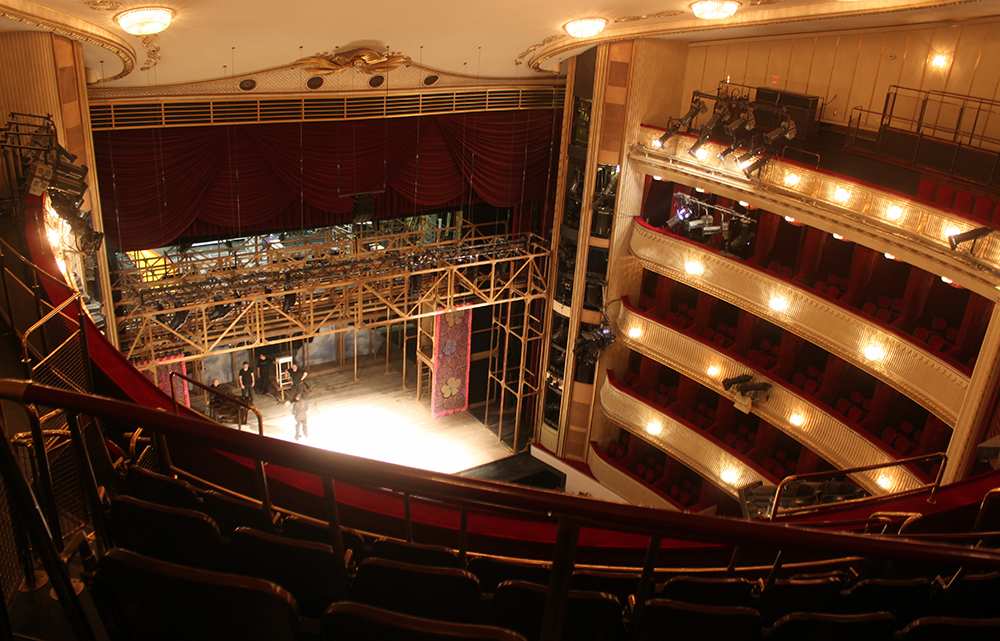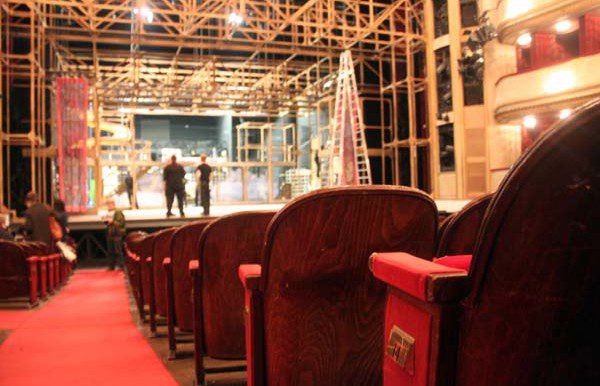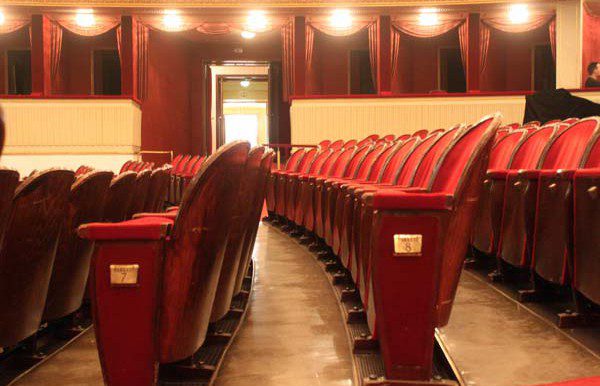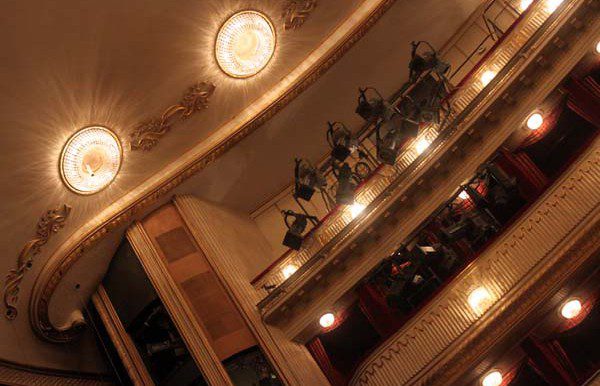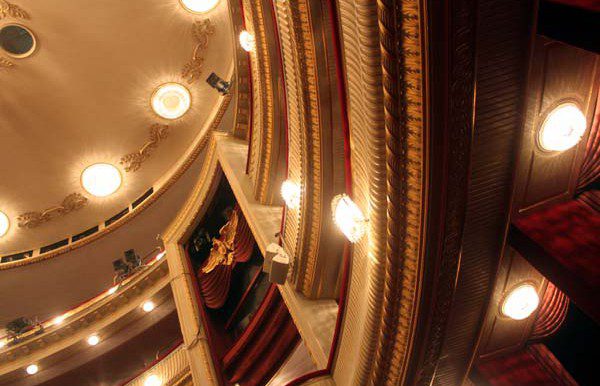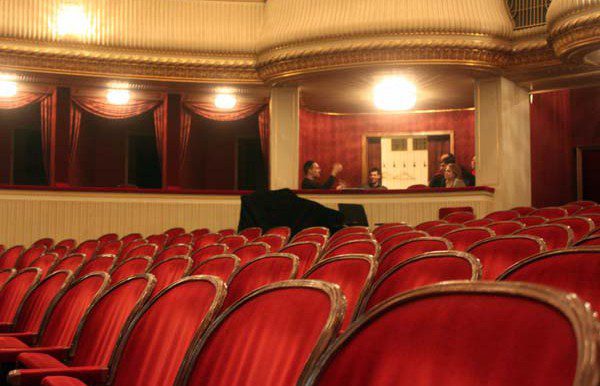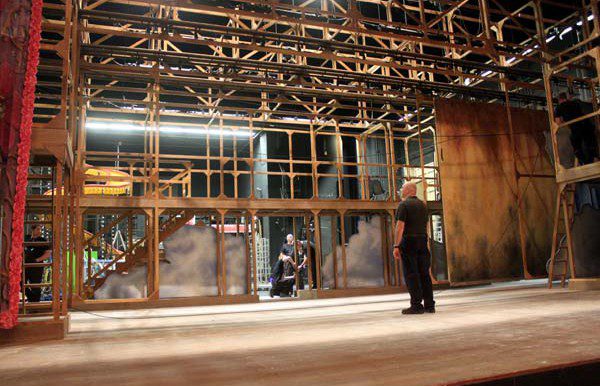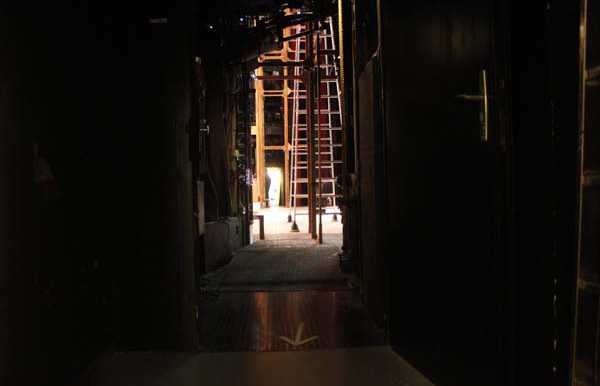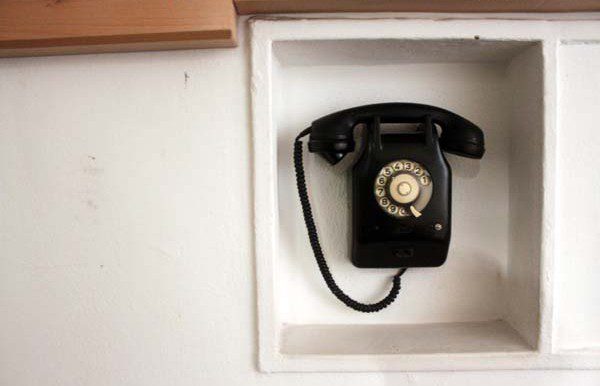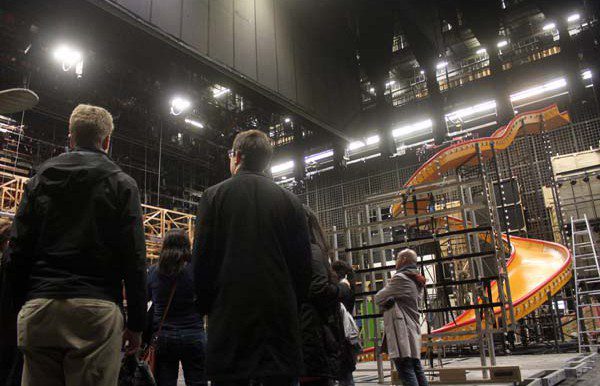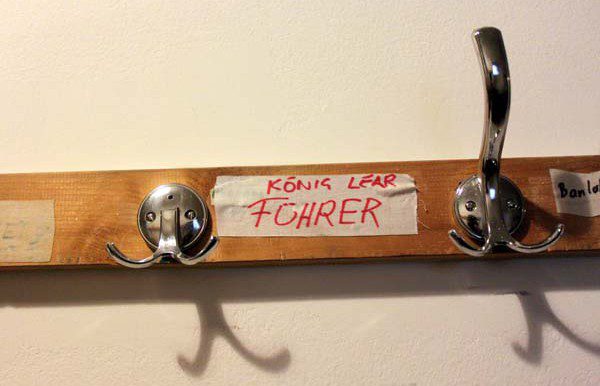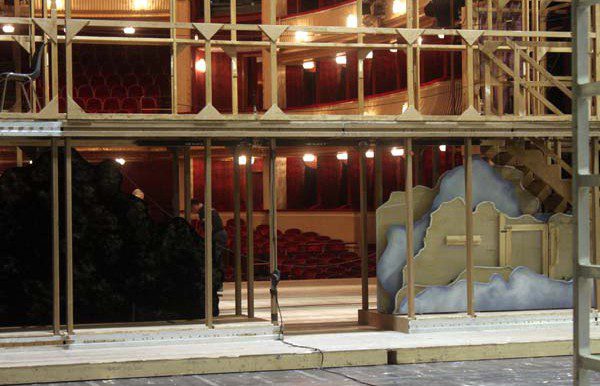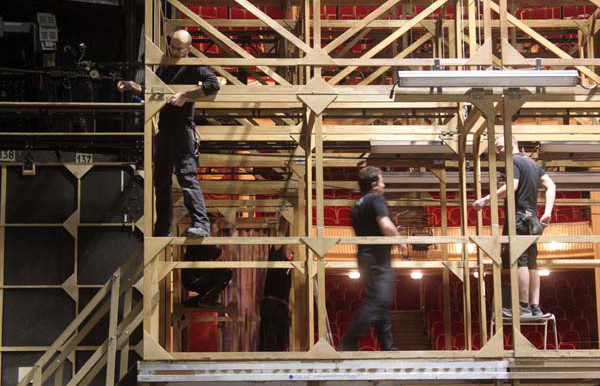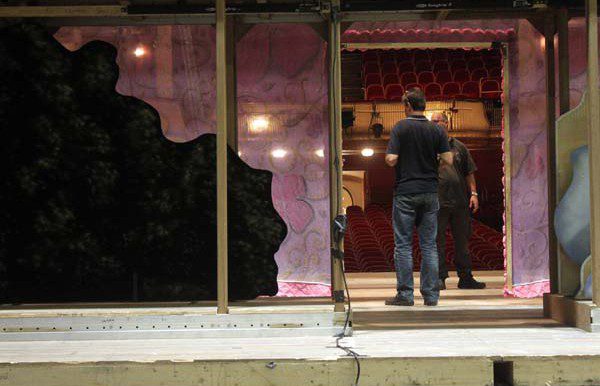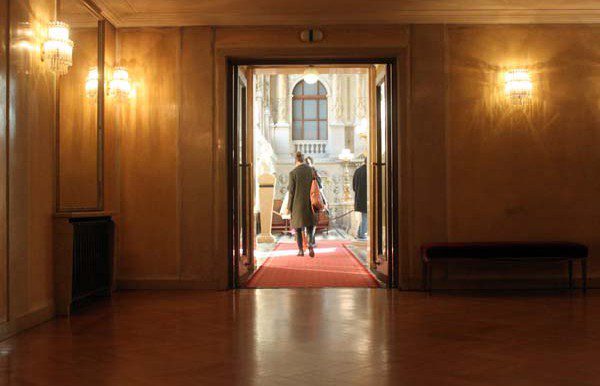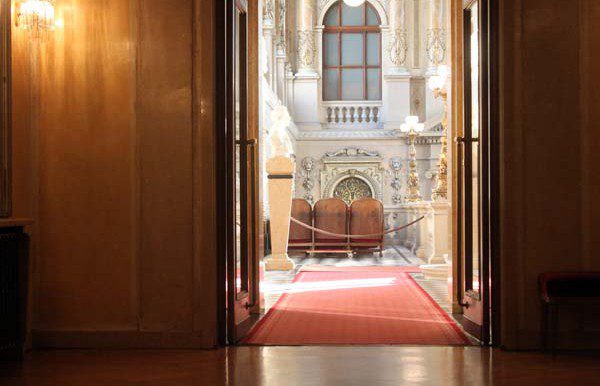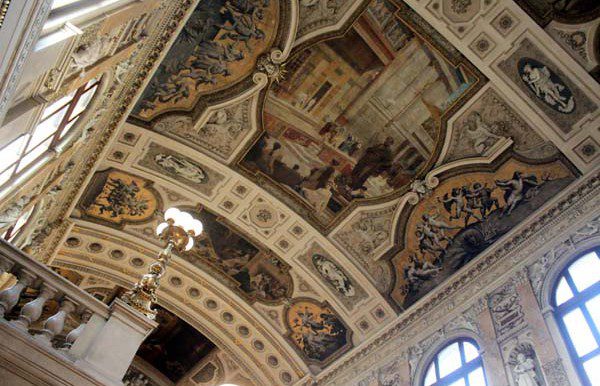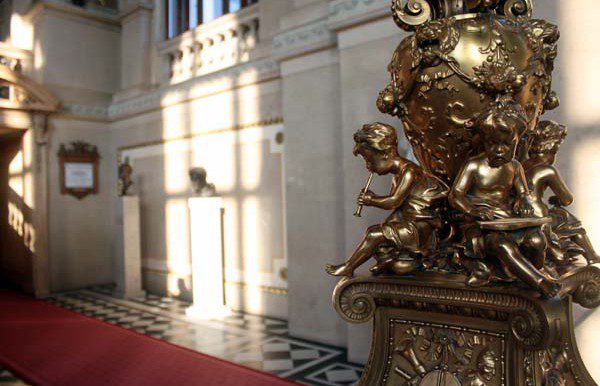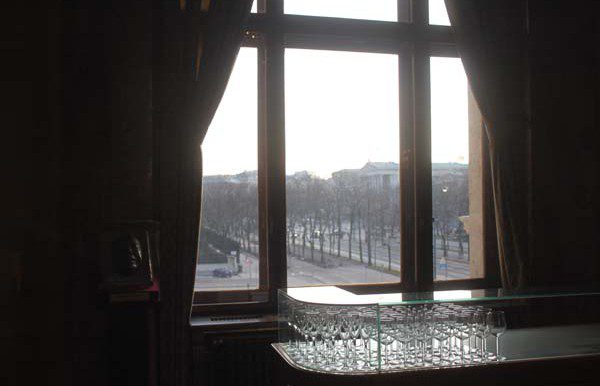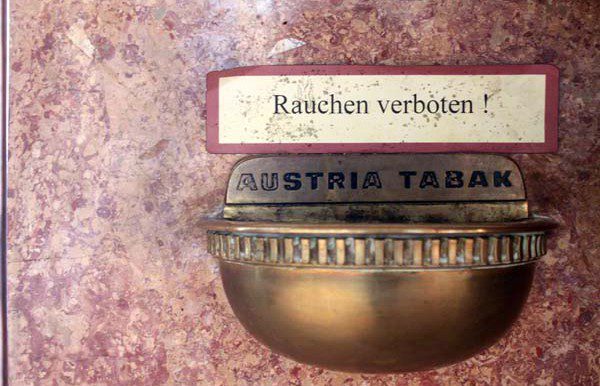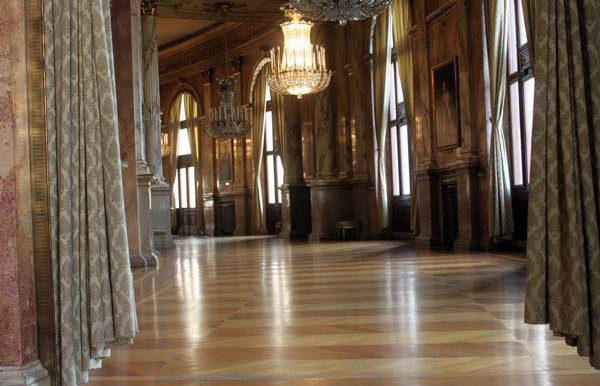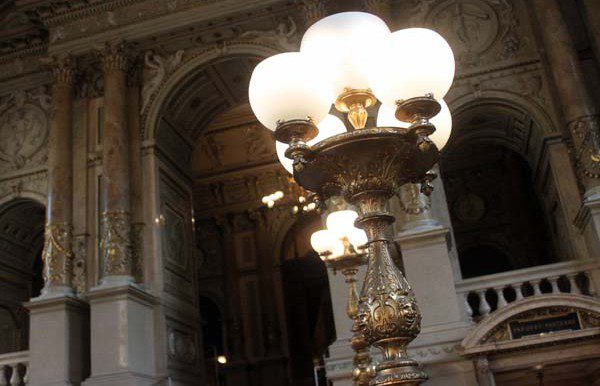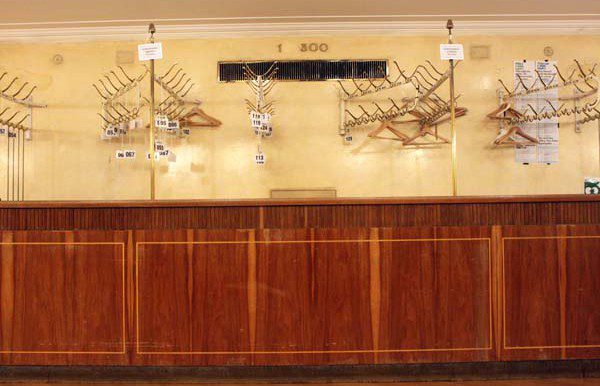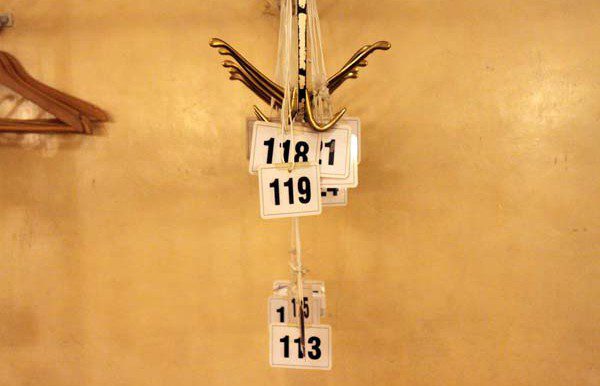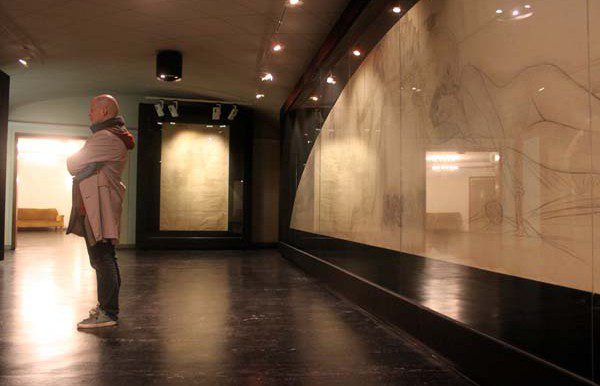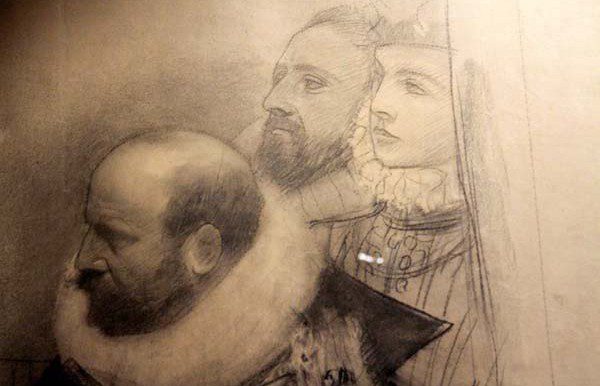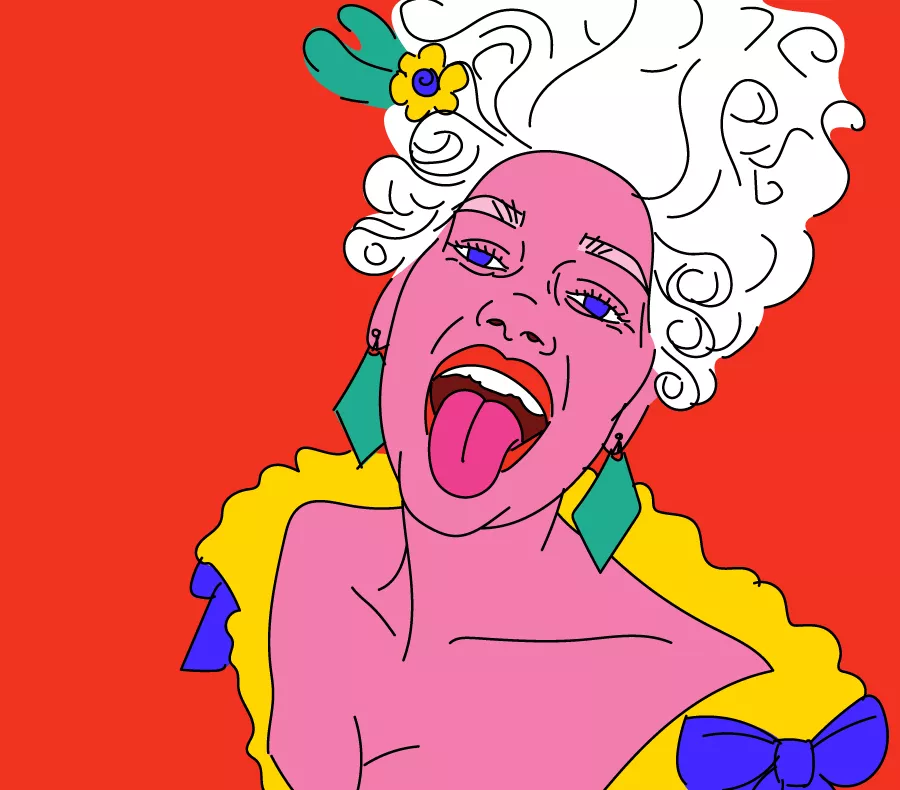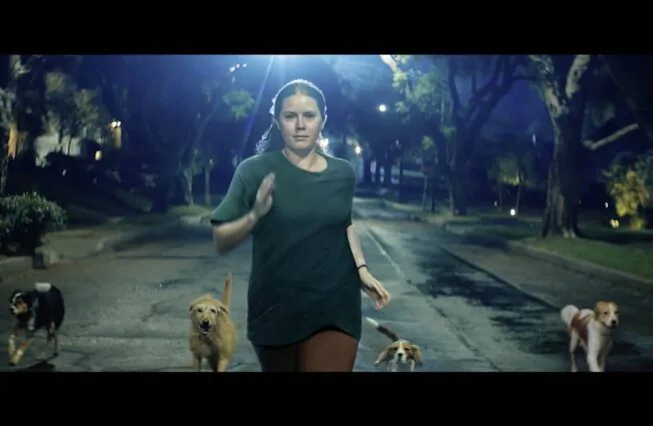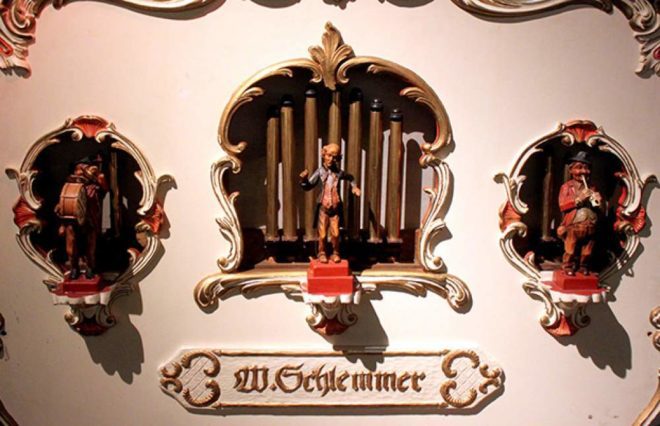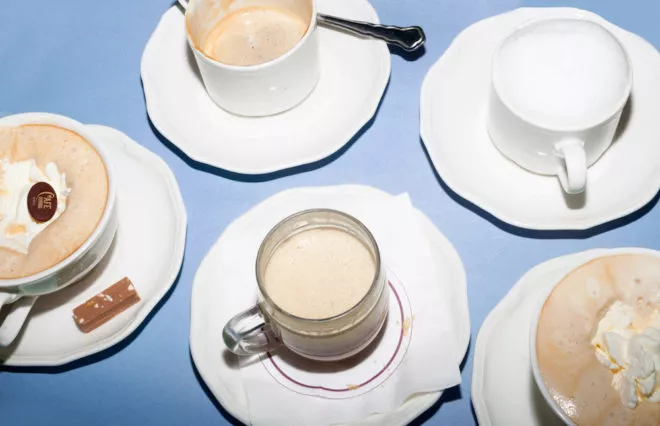A Tour: The story and life behind the curtain of one of Europe’s largest stages at the center of the German-speaking theater world – ‘Die Burg’.
We went on the theater’s ‘Behind the scenes’ tour, and these were our impressions:
Walking into the empty auditorium and seeing the set for a play being built on the stage is like seeing the innards of somebody’s brain; watching the ideas and thoughts in production before they hit oxygen.
Inside the theater’s mind, we’re sat down and given a history lesson by our guide, Bettina. We sit in the front row seats.
We learn the theater was a pet project of the last Habsburg queen, Maria Theresia. That it was supposed to be attached to a wing of the Hofburg Palace which was never built because war broke out. And that another war years later bombed the hell out of the theater, and burned it to the ground.
The small details make eyebrows jerk skyward – that the theater is made up of layers. Layers that stretch 5 levels deep under the stage and auditorium. Levels below the stage that can rotate, and were run mechanically until 2001. A guy is up a ladder on stage, banging away at a wooden lattice. Prop clouds are wheeled across.
We learn that air is sucked in from the Volksgarten (the royal gardens) into underground concrete tunnels which act as an air conditioner, pumping cool air into the auditorium.
Bettina tells us you can now sit where the emperor once sat in his surround sound, deluxe emperor box. It makes me look up and think of how times have changed, and then think of expensive corporate boxes at sporting stadiums, and think of how things have hardly changed at all.
Bettina takes us up on to the stage. It is black all over. Looking out onto the thousands of red seats gives me a kick. We learn that a world is built and deconstructed on the Burgtheater stage every day, and it requires up to 70 people behind the scenes to prepare the set and costumes for each performance.
We learn that over 500 lights are used per production. That before microphones – due to the bad acoustics of the auditorium – actors would stand in certain positions on stage, and developed their own unique style of pronunciation to accommodate the bad acoustics which gave birth to a new language used all over the German-speaking theater world – Burgtheater Deutsch.
We’re taken through foyers and down hallways where hooks line the walls with masking tape stuck above them, which have names and character roles scribbled on them. There’s a telephone that looks like it could call up Franz Ferdinand in his grave. A sign sweeps above my head ‘Bitte Ruhe’ – waiting to be lit. Listening to the tourists next to me, I want to press the button.
This is where actors race through, change constumes between scenes, all the while remaining in character and reciting the scenes ahead. I’m romanticising. There’s a wine glass containing a small pool of red wine, with a distinct print of red lipstick on it.
We learn there are 77 employed actors. And that there are 500 employed non-actors who live the drama behind the scenes, to produce the drama on stage to entertain – there’s those layers again.
Bettina leads us through hallways of polished wood and red velvet walls, empty lobbies where intermission drinks are typically had. Towering windows cast sunlight across the wooden floorboards that creak, and give a glint to the rows of wine glasses at the bar. Ragged signs stating, ‘Rauchen Verboten’ are stuck above the antique golden ashtrays on the wall. The ashtrays can’t be removed – UNESCO has protected them for their historical significance – that people once smoked here.
The bar is empty. So is the cloakroom, and I feel like I have the place to myself. Can’t find the alcohol though. The voices from the tour group have faded up ahead. I pretend to order a drink at the bar, chuckle at one of my jokes as if I’m laughing for the crowd that would laugh with me at my sophisticated joke about one of the scenes in the play.
I catch up to the group on a grand staircase draped in gold stucco. The impressive lamps have naked little dudes looking pensive or playing flutes at their base. The whole groups looking up to the heavens. Bettina’s voice is as calming as a radio program on a hangover-ridden Sunday afternoon as she speaks of the frescoes on the roof. They’re painted by Klimt, and a few other fellows that I’m sure most people forget the names of as soon as they walk out of the room. I don’t – I google their names like the good cultured fiend I am. But can no longer recall their names, now.
The regular tour finishes, but Bettina has more to show us. “There’s a fascinating Klimt exhibit that few people know about.” We’re in for the ride, we tell her.
The elevator is stylishly old, so would now be considered retro.
I automatically get excited when others are excited about something. Somebody once got me excited about porcelain models of mushrooms. Bettina gets me excited about the sweeping sketches behind glass in the small gallery.
I laugh when she tell us that the sketches done by Vienna’s poster boy artist, Klimt, were almost accidently thrown out. They’d already made it into a bin. If an employee hadn’t stumbled across them and realised their worth, they would have been lost; or atleast never found.
The sketches are the rough draft to the murals he later painted on the theater’s roof. (Hint: ask about the amazing, novel dot technique Klimt used to apply the sketches to the roof).
Bettina tells us they once had a ‘Klimt tour’ where they would take visitors through this exhibition and more, but they canceled it due to a lack of interest. I think to myself that Klimt should really get a Pinterest account and work on his social media game. If he was still alive, that is.
Walking around ‘Die Burg’ while it’s empty on this behind the scenes tour offers that feeling of wonder that we often forget in our plastic packaged, flat-screened television, branded and marketed finished product, express delivery, world – the process behind a creative production can be just as dramatic as the production itself. Did I mention they sometimes use real animals and fire on stage …

